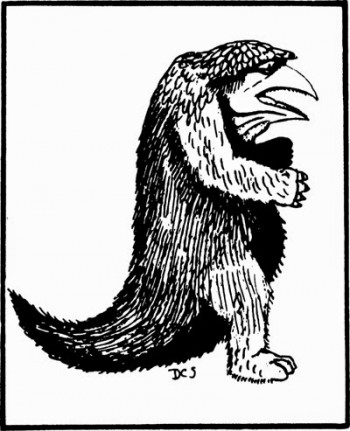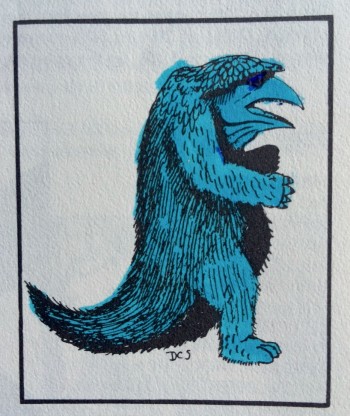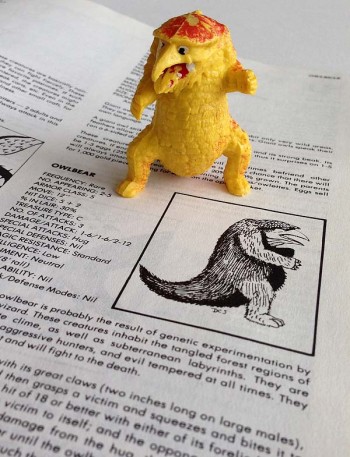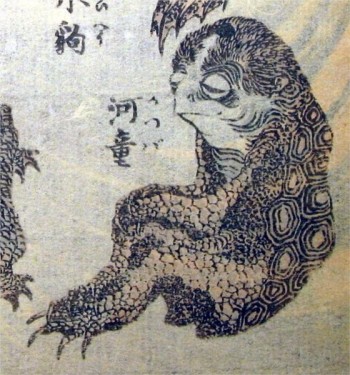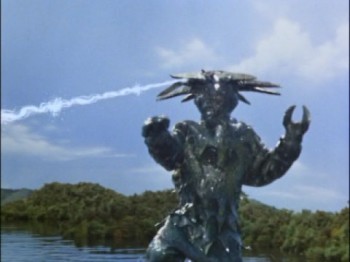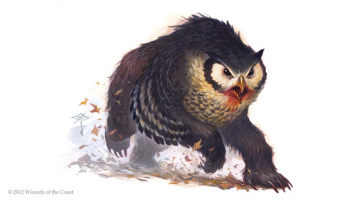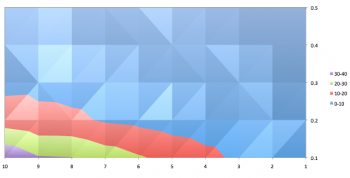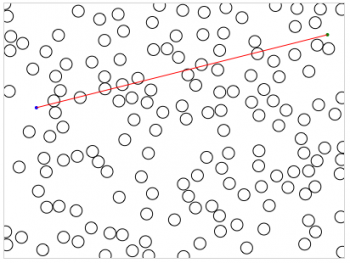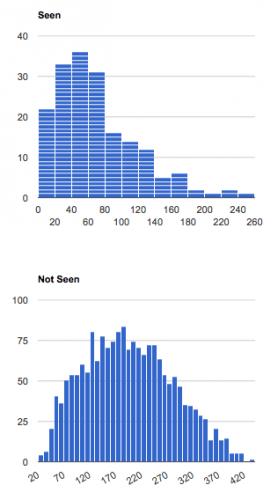First, read this post Adam did on his blog.
I’ve found a similar example. Here is the owlbear (an owl-bear hybrid monster) as illustrated in the first ever AD&D Monster Manual from 1978:
I have a copy of this book. It’s the 6th printing, from 1980, and was owned by KLS long before I met her. The owlbear in this version of the monster manual looks like this:
Fabulous isn’t it! It’s the only monster in the book that has been coloured in, but we can only dream she had done more as a child 🙂
Speaking of the owlbear… what’s this picture?
Interesting isn’t it? A few years ago it was revealed that some of the unusual monsters in AD&D were based on plastic toys. You can read the full story here (with more wonderful pictures). Based on the toy, and the supposition (which seems reasonable) that the toys were bootleg Ultraman monster toys, it’s obvious the owlbear is nothing more than… a kappa!
The kappa is a japanese water spirit which has a very rich mythology. Here’s an illustration done by Hokusai (famous for his The Great Wave Off Kanagawa) in the early 1800’s:
You can see the resemblance to the toy.
So what of the Ultraman connection? Japanese sentai shows often base their monsters on mythology, and it’s almost certain there is an early Kappa-based foe in one of the first few Ultraman series. I did a search and could only find one before 1978, a kappa-influenced alien named Tepeto in an episode of Ultraseven from 1967:
Not very owlbear-like is he?
So my guess is the original kappa designs (such as Hokusai’s) influenced the chinese toy which influenced the owlbear in AD&D.
What of the owlbear today? Here’s the latest illustration:
A bit literal isn’t it?
